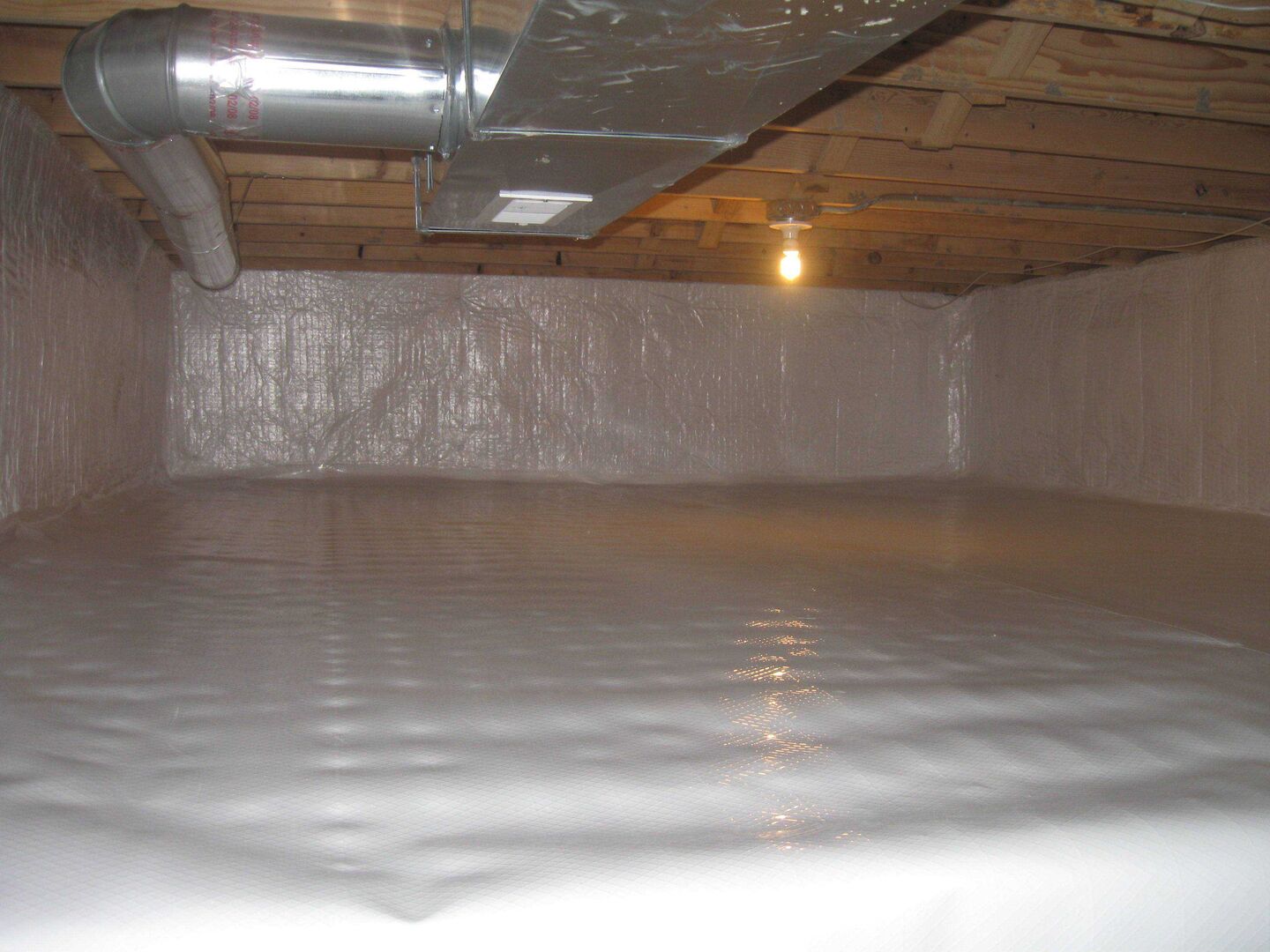Making Sure You Have a Dry Crawl Space in Chicago

There are several old sayings that seem to glorify lack of knowledge, like:
“Ignorance is bliss,” and;
“What you don’t know won’t hurt you.”
A case could be made for the wisdom of these adages but, for most people, being aware of their surroundings and catching potential problems before they get worse makes a lot more sense.
Unfortunately, many Chicago homeowners are blissfully unaware of the condition of their crawl spaces. Quite a few haven’t ventured into the crawl space since buying their house and may have forgotten that it even exists.
Others may be using the crawl space for storage of seasonal items like lawn chairs and holiday decorations or random boxes of “I‑need-to-keep-this-but-don’t‑know-why” stuff and never look past a few feet from the opening.
In either case, water may be seeping into the crawl space and causing undetected damage to stored items, the foundation or the home above and, the more it is ignored, the worse it gets. A little bit of knowledge and some intelligent preparation will ensure a dry crawl space and a worry-free home.
Ensuring a Dry Crawl Space in Chicago
A crawl space is essentially a “mini-basement” and, whether a full or partial construction, is subject to the same water problems as any Chicago basement. Water can enter the crawl space through a number of avenues:
- Non-structural cracks in concrete foundation walls
- Cove joint
- Over the top of the foundation wall
- Bad mortar joints in block walls
- Porous concrete or block
Additionally, because most crawl spaces don’t have poured concrete floors and are built with inadequate moisture barriers, it is common for water to penetrate through the unfinished floor.
When a crawl space gets wet and stays wet it creates a number of problems for the home:
- Stored goods can suffer water damage
- Water can create high humidity in the home above
- Structural lumber and other organic building materials can begin to rot
- Mold can grow and be carried to the home above by HVAC systems
To prevent this and ensure a dry crawl space in Chicago, there are two ways to approach the problem:
Pour a Concrete Floor — If the crawl space is used frequently and the only seepage is coming up through a dirt or gravel floor, it may make sense to pour a concrete floor. A 3- to 6‑mil plastic vapor barrier is laid over the existing surface and 2” – 3” of concrete is poured over it. When the concrete cures, the crawl space is left dry, with a hard, stable floor that is great for storage or other uses.
Encapsulate the Crawl Space – When seepage is more widespread or conditions indicate that it may be in the future, encapsulating the entire crawl space makes the most sense. To encapsulate the crawl space, the contractor first lays a heavyweight semi-rigid plastic barrier, typically 12- to 20-mils thick, on the crawl space floor. A waterproof barrier of radiant insulation is then applied all the way to the top of the walls and the seams are sealed.
As a result, the crawl space is not only dry but free of mold and insects and has been transformed from a dingy, damp cavern into a clean, bright space for storage or other uses.
In either case, an interior drain tile system can be added to prevent future seepage caused by hydrostatic pressure in the soil below.
If you’ve been ignoring your crawl space, it’s time to realize that what you don’t know can hurt you and your home and call on a professional basement waterproofing contractor to make things right. At U.S. Waterproofing, our ComfortCrawl system has created dry crawl spaces all over Chicagoland so why not ask for a free consultation to see if it can work for you?




